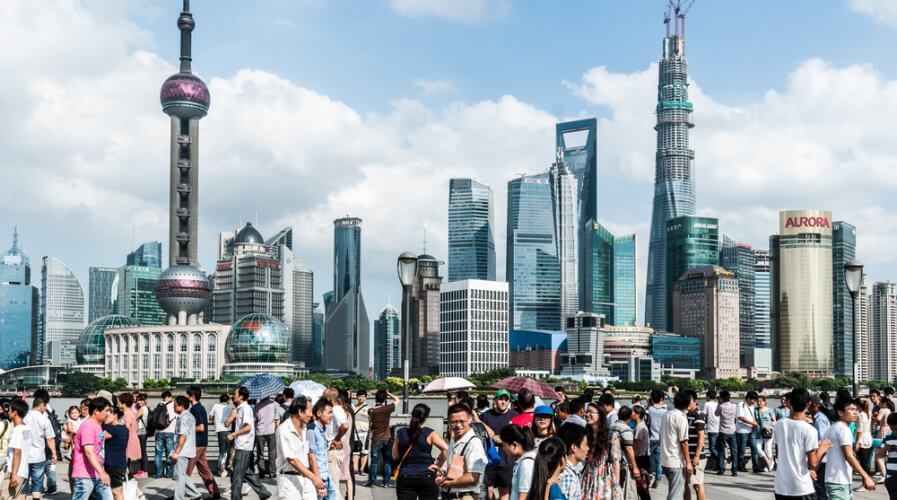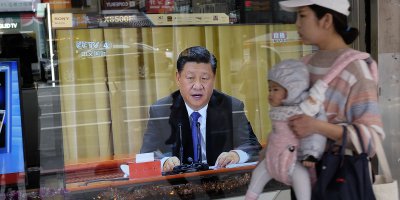
How digitization has transformed China. Source: Shutterstock
IMF study highlights how digitization has transformed China
CHINA has grown to become a force to reckon with thanks to its championing of artificial intelligence (AI), 5G, and other new and emerging technologies. A new study by the International Monetary Funds (IMF) takes a hard look at the country’s digitization achievements so far.
Despite the debates and discussions that the US-China trade war is certain to make an impact on technology, China’s digital economy is expected to continue to expand rapidly.
0are quoted to have revitalized the economy.Thanks to digitization, businesses in China are able to perform financial transactions within seconds on mobile devices, and leverage big data analytics to match supply and demand in markets. Further, automation has led to quality improvement on top of quicker production — taking efficiency and productivity to new highs.
According to IMF’s report, digitization in China has created millions of jobs in new sectors such as e-commerce and in sharing economies.
Alibaba’s platform has created over 30 million jobs in the last 10 years through 11 million small and medium-sized enterprises (SMEs) that suddenly found themselves with a powerful new way to access the market.
The Chinese counterpart of Uber, Didi, has reportedly created opportunities for 13 million drivers nationwide.
All this doesn’t mean digitization hasn’t disrupted traditional sectors and jobs. Since 2012, 9 million jobs were cut in industrial employment due to automation-driven industrial upgrades.
In the year 2016, BBC reported that Foxconn replaced 60,000 factory workers with 40,000 robots.
Foxconn Head of Publicity for the Kunshan region, Xu Yulian predicted that more Chinese companies would follow suit in harnessing automation in manufacturing operations.
“We are applying robotics engineering and other innovative manufacturing technologies to replace repetitive tasks previously done by employees, and through training, also enable our employees to focus on higher value-added elements in the manufacturing process, such as research and development, process control and quality control.”
The country’s exponential growth in e-commerce has kept the employment rate steady.
However, jobs that require human dexterity such as the service sector remains unaffected according to the IMF study.
Digitization has largely transformed the Chinese market through disintermediation, allowing companies to cut out the middle man and streamline their supply chains.
Besides that, we have seen a significant increase in small players due to lowered entry barriers in traditional sectors such as consumer goods and services. Digitization has allowed small businesses to access consumer across the country via the internet — at low costs. The effects of digitization on SMEs have been extremely positive.
While barriers are lower in traditional sectors, they are higher in for digital platforms. This forces digital firms to branch out to other parts of the businesses and subsequently form oligopoly structures which support its scalability.
Promoting economic rebalancing, China’s efforts in developing apps has driven tech power players such as Alibaba and WeChat to create app-ecosystems such as AliPay and WeChat Pay respectively.
Tencent-owned WeChat launched WeChat mini-programs just last year. Mini-programs quickly became a popular channel for big and small enterprises to trial new products and services due to its user-friendliness.
Just three months after the app launched, South China Morning Post reported that WeChat mini-programs “now connect WeChat’s 1 billion users to more than 200 industries, and have logged 100 billion transactions for government and business services.”
The IMF study found that the net impact of digitization on income inequality remains uncertain.
Admittedly, there have been large movements in the market that links suppliers in remote regions of China to the consumer pool in the metropolis. An example of targeted poverty reduction case would be Alibaba’s e-commerce platform that developed more than 1,300 ‘Taobao villages’ in the country.
The concern of widening inequality still stands, with the disruption impacting low-skilled workers the most and benefitting high-skilled workers more with rising employment and faster wage increases.
Be that as it may, inequality has only been on a slow decline post-global financial crisis despite its rapid digitization. It had been stagnant for years before digitization erupted in China.
This is the result of both structural forces and proactive government policies to reduce inequality.
READ MORE
- Strategies for Democratizing GenAI
- The criticality of endpoint management in cybersecurity and operations
- Ethical AI: The renewed importance of safeguarding data and customer privacy in Generative AI applications
- How Japan balances AI-driven opportunities with cybersecurity needs
- Deploying SASE: Benchmarking your approach






